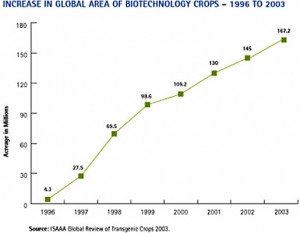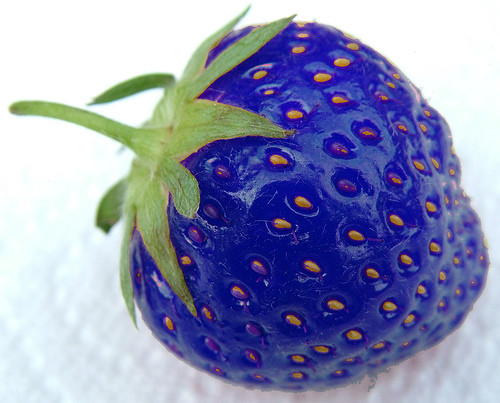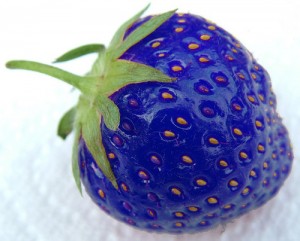If you eat cereal out of a box, then you are consuming GMO food. If you use margarine then you are a GMO junkie. If you eat dairy then the cows that produce it are eating GMO crops to produce that milk, butter, cottage cheese and yogurt that you so much like. If you eat beef, pork, or lamb then you are taking in protein raised on GMO crops. But if you eat bread made from wheat flour then you are in the clear. No GMO wheat on the market as of yet.
What is Involved
What plants are GMO today?
- Corn
- Cotton
- Rice
- Soybeans
- Potatoes
- Rapeseed (Canola)
- Tobacco
- Peanuts
- Cabbage
- Tomatoes
- Sweet Peppers
- Sugar Beets
- Papaya

What are the plants that will be GMO tomorrow? The foods listed below are those being tested by various bio pharmaceutical and chemical companies and are in addition to the ones named above. They come in four major groups and include:
Fruits: apples, cherries, cranberries, grapefruit, kiwi, melons, pears, persimmons, pineapple, plum, and strawberries.
Vegetables: bell and chili peppers, cabbage, carrots, cauliflower, cucumber, lettuce, mustard, olives, onions, peas, radicchio, radish, squash, sweet potato, cherry tomatoes, watercress, and zucchini.
Grains, Seeds and Beans: barley, coffee, popcorn, lentils, oats, rice, sugar cane, and wheat.
Nuts and Seeds: peanuts, walnuts, flax, and sunflower.
Who Is Involved
There are three major stakeholders involved in the business of GMO.
- Technology providers – these are companies like Monsanto, Dow, DuPont, Bayer, BASF and Syngenta (a child of Novartis and AstraZeneca, two big bio pharmaceutical providers). These companies have applied for government approval of GMO crops since 1987, submitting thousands of applications. Nearly 5,000 govern GMO corn alone. Since 1987, in fact, seed producers have submitted tens of thousands of applications for GMO and the vast majority have received approval by governing authorities because the modifications address resistance to pesticides and herbicides to assist in weed and insect control, and viral, fungal and drought resistance.
- Farmers – In 2012, 93% of all soybean acreage in the United States was GMO, 94% was GMO cotton, 88% was insect or weed resistant corn, 75% of Hawaiian papaya was GMO, 90% of rapeseed was GMO, and 90% of sugar beets. And the numbers continue to climb. Why? Because farmers are experiencing better yields, more income and fewer field interventions to deal with insect and weed infestations.
- Consumers – Some would argue that consumers have been ignored in the GMO business, at least in the United States and Canada where no GMO labeling has made GMO usage an unknown to the consuming public. That is not the case in other countries where labeling does happen, although it appears that consumers are willing to eat foods containing ingredients from GMO crops. But in many countries there is a consumer backlash similar to the Proposition 37 being on the ballot in California in the upcoming American election.
So consider this. If you live in North America, Europe, China, and Russia today the cereals, meats and cheeses you eat probably contain GMO content. The soda pop your kids drink and the beer you consume have GMO content. Many of the fresh foods you buy from grocery chains are GM foods. Corn, soybeans, potatoes, to name just a few, are all GMO. And cooking oils, butter and margarine have lots of GMO content as well. Is there a risk to consumers? Is there a correlation between diseases like cancer and GMO? In altering plants with exotic genes can we be encouraging the evolution of new bacteria, viruses, fungi and moulds that will lead to unforeseen consequences?
GMO – Cornucopia or Pandora’s Box
How do you weigh the benefits of GMO against these unknowns? If you don’t know what the benefits are to help you in forming an opinion here is a short yet incomplete list:
- GMO crops are creating larger yields on finite agricultural lands and are giving farmers the ability to grow crops in areas formerly considered sub-optimal because of poor soils or inadequate rainfall and irrigation
- GMO crops are engineered to have a longer after-harvest shelf life to ensure that food grown equals food consumed (25% of what we grow is spoiled before it gets to the dinner table)
- GMO engineered plants can be made capable of combating insect pests and invasive weeds without the administration of pesticides and herbicides
- GMO engineered plants can be designed to fix nitrogen on their own so no fertilizer is required; that means no nitrogen runoff causing algae blooms in rivers and lakes
- GMO engineered crops can be designed to provide higher nutritional value to combat hunger
- GMO engineered crops can contain higher fiber and less starch and carbohydrates to combat obesity and bowel disease
- GMO Engineered crops can have added vitamin content to fight diseases like vitamin-A deficiency leading to 2 million premature deaths each year and 500,000 children going blind
- GMO crops can become edible vaccines creating accessibility for most of humanity to life saving medicines in areas of the world where shipping, storage and administration of traditional vaccinations has proven difficult
Two opposite quotes worth pondering on the GMO question whether we should or shouldn’t:
In his book, The Biotech Century: Harnessing the Gene and Remaking the World, Jeremy Rifkin writes:
“The Biotech Century promises a cornucopia of genetically engineered plants and animals to feed a hungry world ; genetically derived sources of energy and fiber to propel commerce and build a “renewable” society……But with every step we take into this brave new world, the nagging question will haunt us : “At what cost ?” …..Ecologists are unsure of the impacts of bypassing natural species boundaries. Consider, for example, the ambitious plans to engineer transgenic plants to serve as pharmaceutical factories for the production of chemicals and drugs. Foraging animals, seed-eating birds, and soil insects will be exposed to a range of genetically engineered drugs, vaccines, industrial enzymes, plastics, and hundreds of other foreign substances for the first time, with untold consequences.”
Or this comment from Dr. Ray Bressan, Professor of Horticulture and The Director of the Center for Plant Environmental Stress Physiology at Purdue University when he writes:
“We’ll soon be able to produce more crops with less pesticide, less fuel, less fertilizer, fewer trips over the field. We’ll produce much more with much less….A couple of years ago I wouldn’t have predicted this. But I now think that within a decade it will be possible to have crops that can withstand the stresses of early spring and late fall to such an extent that farmers could plant two crops of corn, soybeans, or wheat each year.”
So which is it? Is GMO the lady or the tiger in Frank Stockton’s epic tale? We shall soon see!


















